
해당 제품으로 Infinity Corrected Objective를 C-마운트/F-마운트 카메라에 연결하면 현미경 시스템을 빠르고 쉽게 설정할 수 있습니다. 해당 제품에 제공되는 배율은 1X이며 인라인 조명 포트가 있어 EPI 조명 기술에 비해 콘트라스트가 더 높고 조명이 더 단순한 구조를 갖습니다. 명시야 버전 제품의 경우 조절식 조리개가 있어 카메라 셔터나 게인(gain)을 조작하지 않아도 광 처리량을 제어할 수 있습니다.
해당 제품은 기본 버전(2/3" 포맷 센서용)과 광시야 버전(APS-C 포맷 센서용)으로 제공되며 대물렌즈를 기준으로 카메라 포트의 방향을 90° 혹은 180°로 설정할 수 있게 해주는 옵션이 있습니다. 또한, 광대역 버전 외에도 355nm/532nm/1064nm 레이저를 지원하는 Nd:YAG 레이저 라인 기반 특수 버전과 암시야 현미경 특화 설계가 적용된 특수 버전도 제공됩니다. 해당 제품의 경우 NUV/VIS/NIR 스펙트럼에 최적화된 광학 제품을 사용하면 다양한 Mitutoyo Infinity Corrected Objective와 직접 호환이 가능합니다.
Mitutoyo Manual Turret은 해당 제품의 각 버전에 맞게 사용할 수 있습니다. 또한, 4개의 대물렌즈 마운트가 있어 각각 다른 배율의 대물렌즈로 신속하게 전환할 수 있습니다. 해당 제품과 함께 사용하면 유연한 비디오 이미징 현미경 시스템이 생성됩니다.
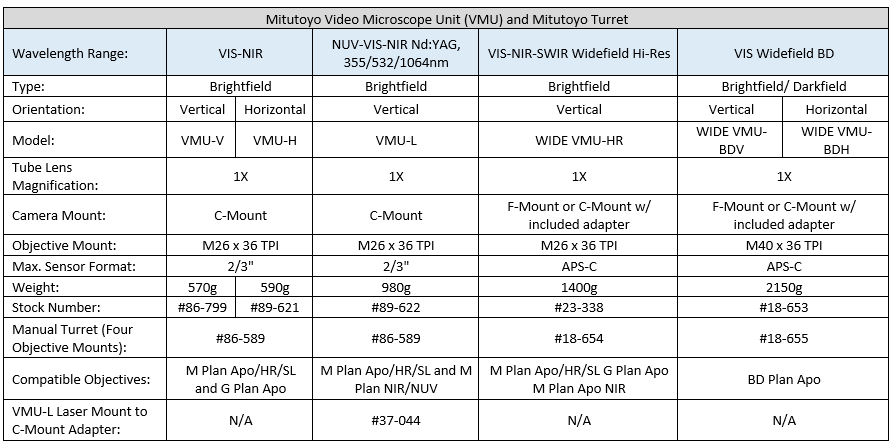
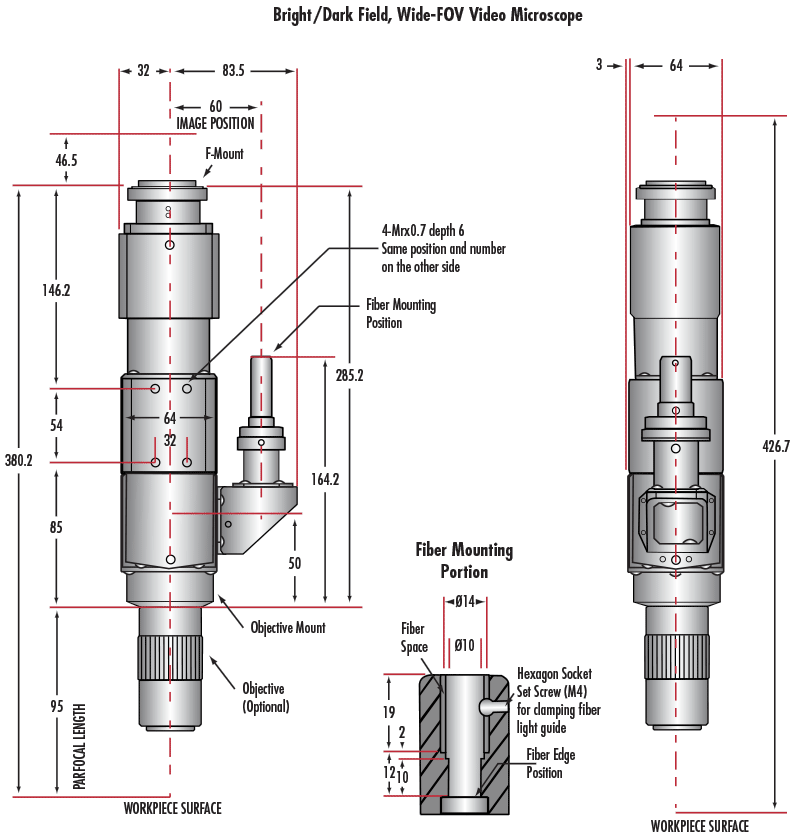
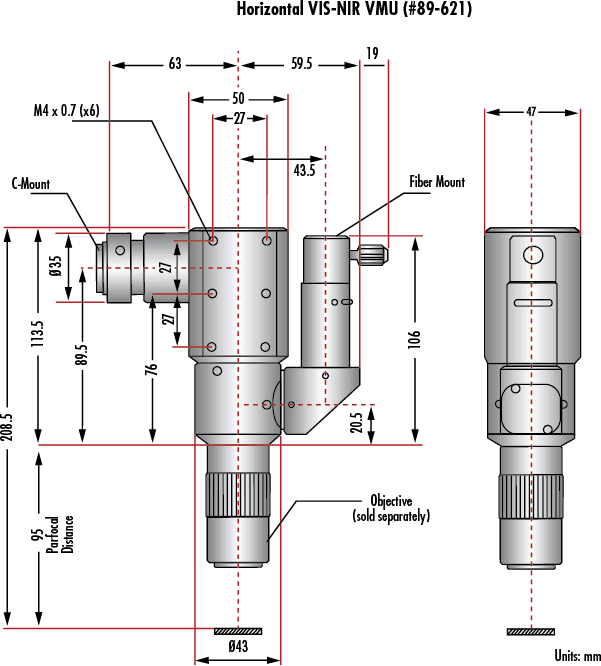
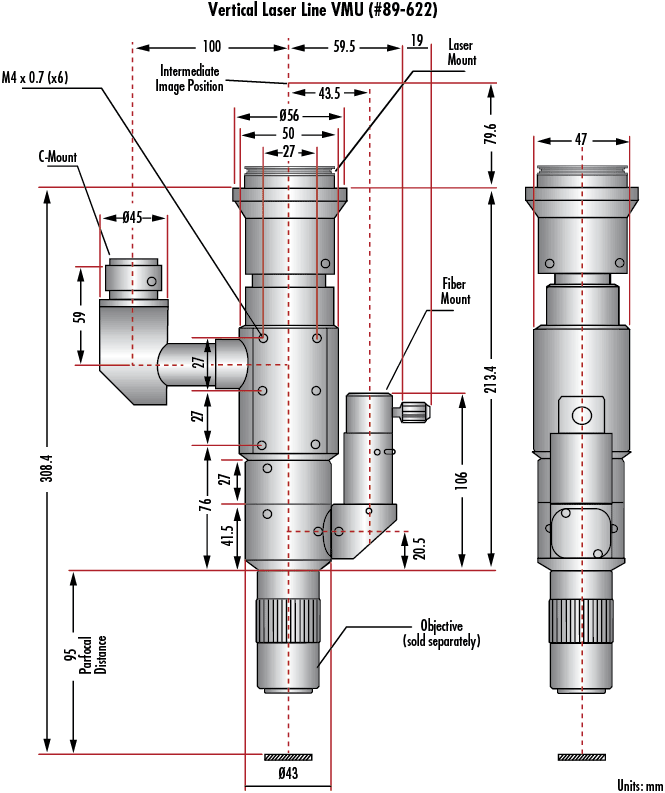
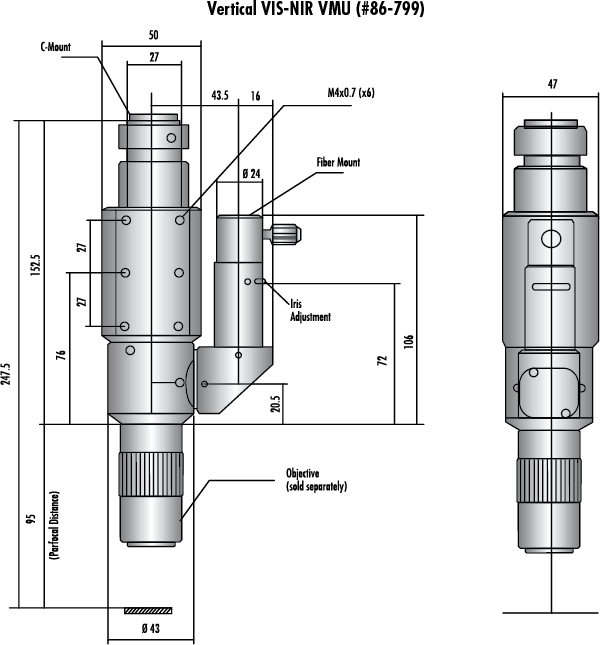
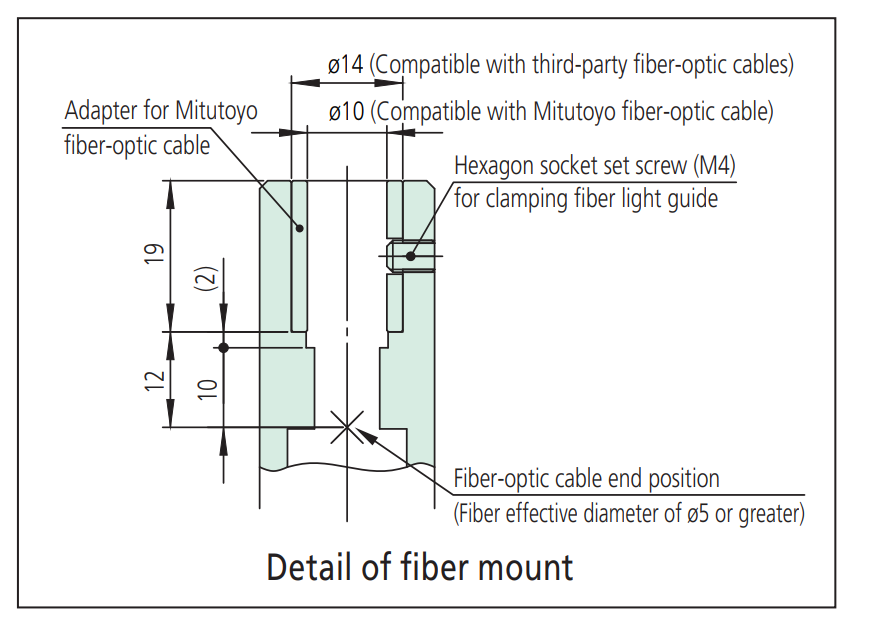
| Mitutoyo Video Microscope Unit (VMU) and Mitutoyo Turret | ||||||
|---|---|---|---|---|---|---|
| Wavelength Range: | VIS-NIR | NUV-VIS-NIR Nd:YAG, 355/532/1064nm | VIS-NIR-SWIR Widefield Hi-Res | VIS Widefield BD | ||
| Type: | Brightfield | Brightfield | Brightfield | Brightfield/Darkfield | ||
| Orientation: | Vertical | Horizontal | Vertical | Vertical | Vertical | Horizontal |
| Model: | 378-505 | 378-506 | 378-507 | 378-519 | 378-517 | 378-518 |
| Tube Lens Magnification: | 1X | 1X | 1X | 1X | ||
| Camera Mount: | C-Mount | C-Mount | F-Mount or C-Mount w/included adapter | F-Mount or C-Mount w/included adapter | ||
| Objective Mount: | M26 x 36 TPI | M26 x 36 TPI | M26 x 36 TPI | M40 x 36 TPI | ||
| Max. Sensor Format: | 2/3" | 2/3" | APS-C | APS-C | ||
| Weight: | 570g | 590g | 980g | 1400g | 2150g | |
| Stock Number: | #86-799 | #89-621 | #89-622 | #23-338 | #18-653 | |
| Manual Turret (Four Objective Mounts): | #86-589 | #86-589 | #18-654 | #18-655 | ||
| Compatible Objectives: | M Plan Apo/HR/SL and G Plan Apo | M Plan Apo/HR/SL and M Plan NIR/NUV |
M Plan Apo/HR/SL G Plan Apo
M Plan Apo NIR
|
BD Plan Apo | ||
| VMU-L Laser Mount to C-Mount Adapter: | N/A | #37-044 | N/A | N/A | ||
본사 및 지사별 연락처 확인하기
견적 요청 도구
재고 번호 입력 필요
Copyright 2023, 에드몬드옵틱스코리아 사업자 등록번호: 110-81-74657 | 대표이사: 앙텍하우 | 통신판매업 신고번호: 제 2022-서울마포-0965호, 서울특별시 마포구 월드컵북로 21, 7층 (서교동, 풍성빌딩)
The FUTURE Depends On Optics®